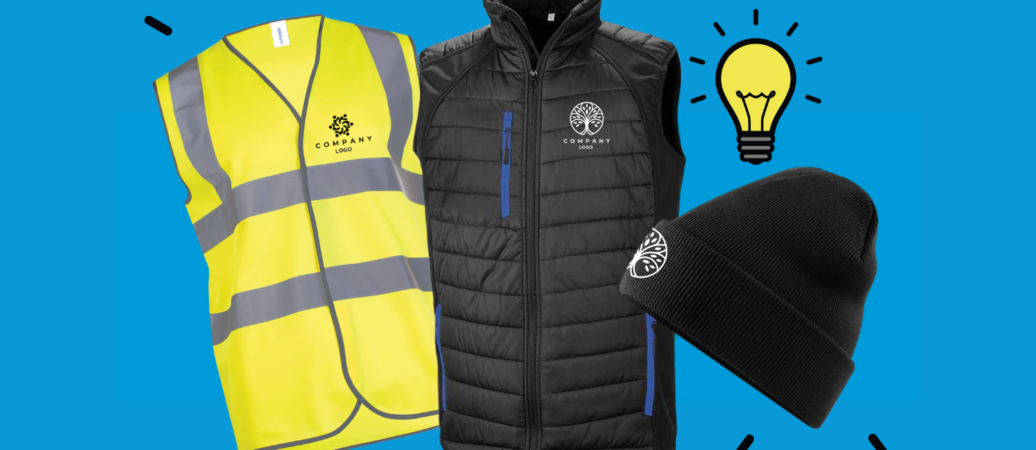Branded Clothing for Travel: Wrinkle-Resistant Fabrics That Perform
Branded Clothing for Travel: Wrinkle-Resistant Fabrics That Perform
Blog Article
The Relevance of Lasting Garments: Exactly How It Influences the Atmosphere and Your Wardrobe
Lasting apparel is significantly acknowledged for its vital function in minimizing the ecological influence of the quick apparel industry. By concentrating on eco-friendly products and ethical production methods, it addresses pushing environmental issues. This shift not just profits the world but additionally affects customer options, resulting in a more thoughtful approach to closet administration. Understanding these characteristics increases vital inquiries about fashion's future and individual obligation in shaping it.
The Ecological Impact of Rapid Style

Benefits of Lasting Materials
Lasting products supply substantial advantages, particularly through environmentally friendly textile options that lessen ecological damage. These products likewise demonstrate resilience and durability, decreasing the need for frequent substitutes. Therefore, they add to a much more sustainable garment industry and advertise accountable customer habits.
Eco-Friendly Material Choices
While the style industry has actually long been related to rapid trends and environmental injury, the rise of green material selections presents a transformative opportunity. Lasting materials such as natural cotton, hemp, and Tencel have obtained popularity because of their reduced eco-friendly impact. These fabrics are commonly produced without damaging chemicals and call for less water, lowering their carbon footprint - Branded Clothing. Additionally, several environmentally friendly textiles are eco-friendly, adding to a round economy by decreasing waste. Picking sustainable products not only supports environmentally liable methods yet also advertises healthier environments. As consumers become more knowledgeable about their acquiring power, the demand for eco-friendly textiles encourages brand names to introduce and take on more lasting manufacturing methods, eventually profiting the planet and future generations
Sturdiness and Longevity Benefits
Lots of customers are increasingly identifying the durability and durability advantages of sustainable materials in their apparel options. Unlike conventional textiles, lasting materials such as organic cotton, hemp, and recycled polyester are engineered to hold up against wear and tear, leading to garments that last longer. This minimized regularity of replacement not only saves customers cash over time but likewise reduces waste generated by rapid style. On top of that, lasting garments usually uses environmentally friendly production methods that enhance textile toughness, adding to a reduction in the overall carbon footprint. By spending in long lasting clothing, customers can cultivate a more lasting wardrobe while delighting in top quality items that preserve their aesthetic and performance gradually. As a result, sturdiness and durability stand as essential advantages of picking sustainable products.
Reducing Waste Through Lasting Practices
Decreasing waste in the fashion industry can be attained via ingenious methods such as upcycling and repurposing materials. Additionally, taking on minimalist closet strategies motivates consumers to focus on high quality over quantity, ultimately decreasing apparel intake. Together, these strategies add considerably to a more lasting clothing version.
Upcycling and Repurposing Materials
Upcycling and repurposing products have become innovative approaches in the fashion business, changing disposed of fabrics into valuable new items. This technique not only minimizes waste however likewise urges imagination and originality in clothes layout. By taking old garments and materials, designers can develop distinct items that show individual design while decreasing the need for new sources. Additionally, upcycling frequently needs much less energy and water compared to standard manufacturing processes, considerably decreasing the environmental impact of fashion. As consumers come to be extra knowledgeable about sustainability, the popularity of upcycled apparel proceeds to increase, advertising a round economy. Eventually, these techniques add to a much more sustainable future, where style focuses on ecological health over fast manufacturing and intake.

Minimal Closet Approaches
As individuals increasingly look for to minimize their environmental influence, embracing minimal closet techniques has gotten grip as a reliable approach to lasting style. These approaches stress top quality over amount, encouraging consumers to curate a smaller collection of flexible, sturdy garments. By concentrating on timeless items that can be combined and matched, people can minimize the frequency of acquisitions and inevitably lower waste.Additionally, minimalism promotes mindful consumption, prompting buyers to show on the environmental and ethical effects of their options. This method not only cultivates a much more sustainable way of living yet likewise simplifies daily decision-making relating to clothes. As people accept minimalist principles, they add to a style society that values sustainability and liable consumerism, ultimately resulting in a more eco-conscious culture.
The Role of Moral Labor in Lasting Fashion
While lots of consumers are increasingly familiar with the environmental effects of their clothes selections, the relevance of ethical labor techniques in sustainable style can not be neglected. Moral labor includes reasonable salaries, secure working conditions, and respect for employees' legal rights, creating the foundation of responsible style production. Brand names that prioritize honest labor not just uplift areas but likewise established a requirement for accountability in the industry.Moreover, the assimilation of ethical techniques fosters openness, allowing customers to make informed selections about their acquisitions. This technique contrasts greatly with fast fashion's unscrupulous labor models, which often prioritize revenue over individuals. By sustaining firms dedicated to ethical labor, consumers add to a system that values human self-respect alongside environmental sustainability. Honest labor is not just an add-on; it is important to the more comprehensive objective of lasting fashion, making certain that the quest for eco-friendliness does not come at the expense of human rights.
The Impact of Lasting Apparel on Carbon Emissions
Lasting garments has the prospective to considerably lower carbon emissions related to the garment industry. Conventional garment production adds significantly to greenhouse gas discharges, primarily due to energy-intensive manufacturing procedures and making use of non-renewable resources. On the other hand, lasting style concentrates on environment-friendly materials, such as organic cotton or recycled fibers, which typically need less power to produce.Moreover, sustainable brand names tend to take on much more efficient manufacturing techniques, reducing waste and lowering overall discharges. By prioritizing resilience and timeless layout, lasting apparel encourages customers to purchase much less frequently, more decreasing the carbon impact connected with overconsumption.Additionally, several lasting brand names are committed to transparency in their supply chains, making it possible for consumers to make enlightened choices that line up with their worths. Ultimately, changing towards sustainable garments can lead to a substantial reduction in carbon exhausts, contributing to a much healthier earth and a more lasting future for the garment industry.
Sustaining Local Economic Situations With Sustainable Options
The change toward sustainable clothing not just addresses ecological issues but likewise considerably benefits neighborhood economic climates. By picking sustainable style, consumers usually support tiny businesses and regional craftsmens, enhancing neighborhood durability. These ventures generally operate on a smaller scale, prioritizing craftsmanship and honest methods over mass production.Investing in locally made lasting apparel promotes work development and boosts financial growth within communities. As consumers come to be much more aware of the ecological effect of their purchases, they progressively look for out items that show their worths. This demand urges regional makers to embrace lasting methods, contributing to a circular economy.Moreover, sustaining regional companies lowers transportation emissions, straightening with eco-conscious customer behavior. The interconnectedness of sustainable clothing and neighborhood economies highlights the essential duty that specific options play in promoting both economic and environmental wellness. By promoting these neighborhood links, neighborhoods can flourish while additionally functioning towards an extra sustainable future.
Transforming Your Storage Room: Tips for a Sustainable Wardrobe
As individuals look for to minimize their environmental impact, changing a wardrobe into a lasting closet ends up being an important step. One effective technique is to review existing garments, keeping just products that are used consistently which straighten with sustainability objectives. Prioritizing quality over quantity is vital; purchasing resilient items from environment-friendly brands can greatly minimize waste.Additionally, including pre-owned things can rejuvenate a closet while reducing ecological damages. Organizing garments swaps with pals or donating unused things can even more advertise sustainability.When shopping, people need to seek products that are natural, recycled, or biodegradable, and stay clear of fast fashion stores - Branded Clothing. Exercising mindful intake by thoughtfully taking into consideration each purchase can add to a more lasting way of living. By carrying out these tips, one can create a closet that mirrors individual style while supporting ecological stewardship
Often Asked Inquiries
How Can I Determine Lasting Garments Brands?
To recognize lasting apparel brand names, one need to research products used, check for accreditations like Fair Profession, and take a look at the brand name's transparency concerning their manufacturing processes, labor practices, and environmental influence, guaranteeing moral and environment-friendly techniques are prioritized.
What Are the Expenses Linked With Lasting Style?
The prices associated with sustainable fashion can vary substantially. Greater production costs, honest sourcing, and environment-friendly products commonly result in raised market prices, which might browse around this web-site deter some customers while appealing to ecologically conscious shoppers.
Can Sustainable Clothes Be Trendy and Fashionable?
Lasting garments can undoubtedly be trendy and elegant. Designers progressively prioritize cutting-edge materials and honest production approaches, verifying that fashion and sustainability can coexist. Consumers currently have diverse options that blend appearances with ecological awareness.
Exactly How Does Laundering Clothing Affect Their Sustainability?
Cleaning clothing greatly influences sustainability by consuming water and energy, adding to pollution, and triggering microplastic release. Constant washing can weaken textiles, reducing their lifespan and boosting the need for substitutes, ultimately aggravating environmental worries.
What Is the Life Expectancy of Sustainable Garments Compared to Rapid Style?
The lifespan of sustainable apparel commonly exceeds that of quick style items, commonly enduring several years due to top quality products and craftsmanship. On the other hand, rapid fashion garments may degrade rapidly, demanding browse around this site more regular substitutes. Lasting apparel is increasingly acknowledged for its essential role in minimizing the ecological effect of the fast style sector. While several customers are increasingly aware of the environmental repercussions of their garments options, the relevance of ethical labor techniques in lasting style can not be overlooked. Branded Clothing. Lasting apparel has the potential to significantly decrease carbon discharges connected with the fashion market. In contrast, sustainable style concentrates on green products, such as organic cotton or recycled fibers, which often need much less energy to produce.Moreover, sustainable brand names have a tendency to embrace a lot more reliable manufacturing methods, lessening waste and decreasing total discharges. By focusing on longevity and classic layout, lasting garments encourages customers to get less frequently, more minimizing the carbon footprint linked with overconsumption.Additionally, lots of sustainable brand names are dedicated to transparency in their supply chains, making it possible for consumers check my site to make educated options that align with their worths
Report this page